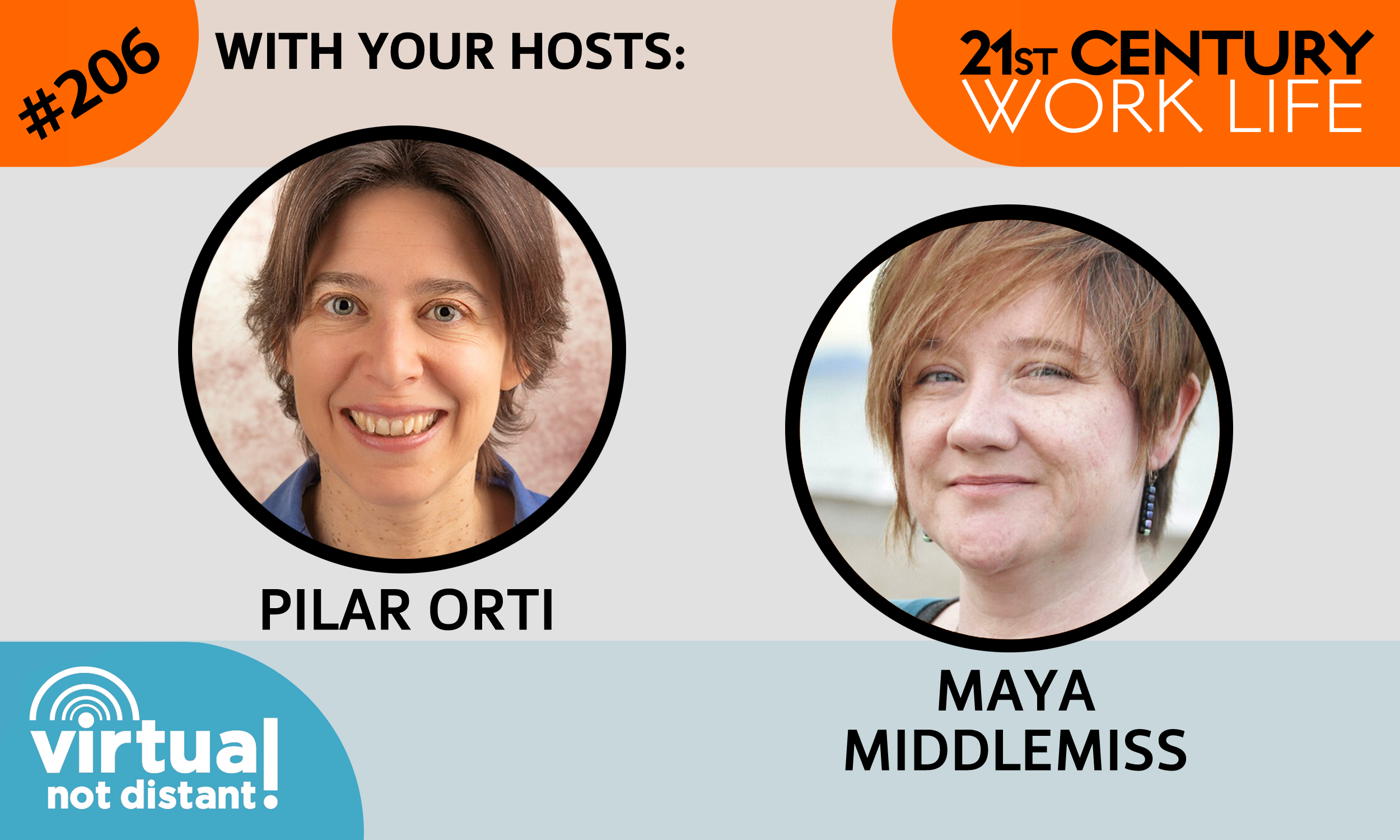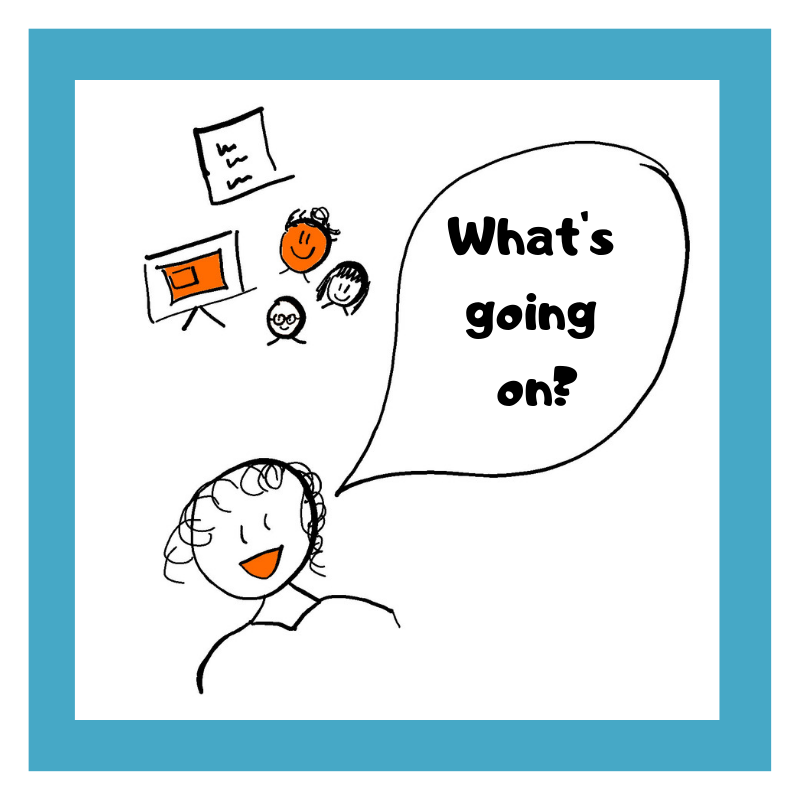WLP206 The Dangers of Using Collaboration Platforms
Today we have such a detailed episode for you, that we’ve had to split it into two, for practical distribution reasons.
What’s going on
Buffer are looking at the introversion question too - and how to make this work when virtual teams meet up in ‘real’ life Ten reflections on Buffer's 10th team retreat. I am sure it helps if your CEO is introverted! But there are lots of good ideas in here for every team.
Santander brews up the first UK work cafe for small businesses - is it a café, is it a bank, is it a co-working space? An incubator? We’re not sure, but we like the idea and look forward to seeing how it develops, the more flexibility the better chance of everyone finding their perfect work space locally, and these days banks need to do more to connect with their communities.
Formatting in Trello - yes you can italicise... but not in the mobile app. Oh well! We all learn something new every day, and this was news to us.
New MSTeams accessibility features, explained at Use Immersive Reader in Microsoft Teams Shared by our friend from previous episodes Chris Slemp (ep. 202 and others). Text is NOT the optimal communications mode for everyone, and it’s good to see platforms addressing this.
We’re looking for more evidence-based research to support our work with remote teams - Pilar had a shout-out on LinkedIn here with some fascinating replies. Can you add anything?
Speaking of networking, Pilar is starting a face-to-face Meetup group in West London, for people in the remote leadership space. No powerpoint or pitching, just coffee and in-depth conversation. First coffee on 1st October.
And another upcoming event which might interest London area listeners, from Minds@Work LAB on the 17th September 2019, all about Mentally Healthy Remote Working - so do check that out.
Collaboration platforms - how we’re using them now
A truly 21st Century work-life phenomenon, it’s time to talk about the tools we use every day. It’s time to talk about ‘chat’ - whether you use Slack, MSTeams, Twist, or other more project-management based tools which also include the ongoing conversation that ties the whole work process together.
Slack was one of the first truly built for business, rather than repurposing consumer tools like MSN messenger and Skype (which was a consumer tool at first, and now Skype for Business is being subsumed into MSTeams).
We enjoyed this paper about How Scientists use Slack, which demonstrated the versatility of it and how different types of workers can shape it to their own needs, from conversation to creation. Collaborating on a research paper with international colleagues is a great example of time-agnostic asynchronous remote work.
They also use the reminders tool - and we didn’t know you could set reminders for other people. Very interesting! And there’s a subtle difference when an app asks or reminds people about something, rather than a colleague…
Interesting too how tools like Slack are being used at an organisational level, with hundreds or sometimes thousands of users - requiring very different moderation and interaction approaches, and potential new challenges, and leading Slack to introduce new admin tools for professional users. We’d rather see team agreements and consensus, than controls - but perhaps with scale it’s becoming inevitable, especially when the tools are being adopted at an organisational level.
So these tools are becoming multipurpose communications hubs, not always real-time chat. Channels can become discussion forums, co-creation spaces, announcement channels and so on. And as we’re always saying, asynchronous conversation rocks!
Our friends at Buffer experimented with turning Slack off altogether - Slack-off Fridays: What Happened When One Team Experienced a Day Without Slack - there are many other ways to do visible teamwork effectively.
The use of the word chat (or instant messaging, from which these tools evolved) frustratingly suggests an instantaneous response. So we need a new collective noun. What shall we call them? Does “collaboration platforms” work? “Digital hubs”? Where we live and do our work online needs a better name, so please let us know what you think!
Collaboration platforms - the dangers
(audio file part TWO)
Too much information, vs “fear of missing out”?
How do we stay on top of all the messages in our platforms, making sure we don’t get overloaded, while not missing anything vital? What if you get back from a holiday or an illness and there are 400 alerts…?
Your team agreement needs to specify what to check, as opposed to what you can let go of, or the best way to catch up on the conversation after a break. And your team agreement needs regular review to ensure relevance and that it’s continuing to serve you well. Your team changes, and so does the tool (for example you might want to consider the appropriateness of animated emoji use, non-trivial for any users with dyslexia, or whether our emoji-sets are too culturally exclusive anyway).
Too much text
Some of us type better than others do, and might also need to get comfortable with a speed vs accuracy trade off. Remember you can dictate, you can record audio, you can record video.
You can use photos, of drawings or even handwriting. Draw your own emojis! While we can’t customise the platforms themselves, and how they look and feel, but our culture and team personality can really emerge quite creatively.
But, if it’s an important communication which might need to be referred back to or found in search, then text - which can be dictated text - is the only thing really searchable/indexable, for now (soon the AIs will be able to search our audio for keywords easily). So do consider that when choosing how best to post.
Episode 153 Should we be Talking or Typing? goes into more detail on this.
Always on
We need to choose a collaboration platform with good mobile tools, but we do need to remember to ensure those boundaries between work and non-work.
When your collaboration tool is there on the homescreen of your personal mobile phone, you’re never away from it. Richard Mackinnon discussed on a recent Work Life Psych podcast ‘My phone, where’s my phone!’, how truly addicted to our devices we are.
And sometimes we are left anxiously waiting for responses, in the same way as we crave our Facebook likes - is this person confused, annoyed, or just responding asynchronously when it suits them best? The reward-centres of the brain that overthink these things have made the social networks billions, but do we want this effect in our work communications?
Enabling, or obscuring, hostility
This article from Workable about hostile work environment signs and fixes led us to think about how signs of bullying, harassment or oppression become visible (or not) in the online workspace, and an interesting Twitter thread emerged as a result.
Conflict at work might be less obvious to others, but conversely it is easier to provide evidence of when communications are digitised. There are lots of issues here about whether this is done ‘officially’ or not - the article from People Management, Do you know what your employees are saying in private messages? discusses this in depth from a policy point of view, but everyone should remember that nothing in the digital space is truly secret.
It’s important that everyone knows how to discuss difficulties and with whom, and that people get to know their online colleagues as whole people and develop their own support networks. And while there are apps which can help highlight inappropriate communications, (such as the one described here in Venture Beat Valued raises $1.7 million for Slack chatbot to combat workplace harassment), there are dangers in abdicating any of these responsibilities for team wellbeing and safety, to a tool or app.
So many issues to think about, when it comes to our collaboration platforms, whether we call them chats or digital hubs or our online offices… we need to use them well, use them right, because these ARE our workplaces now.
We conclude this episode with a lovely anecdote about two very creative people communciating asynchronously, in an unusual setting… but you’ll have to listen to find this little gem, which reminds us just how many different ways there are to communicate.
Don’t forget to keep communicating with us! About your collaboration platforms, or any other aspect of remote work. You can message us directly, you can tweet Maya or Pilar or the Virtual Not Distant account at any time, to keep this conversation going - asynchronously of course.
Just let us know you made it to the end, of this epic set of show notes!
We hope you enjoyed this double-trouble episode where Pilar and Maya dug deeply into this topic. We’re continuing to talk to other guests in upcoming episodes, and we now have a podcast guest application form, if you would like to recommend yourself or anybody else to come and join us.
For now, thank you very much for listening! See you next time.
If you like the podcast, you'll love our monthly round-up of inspirational content and ideas:


